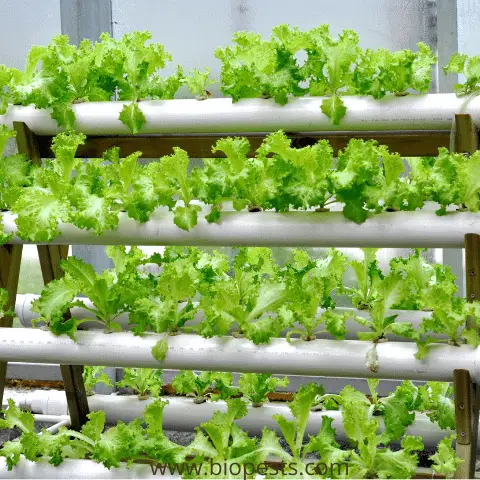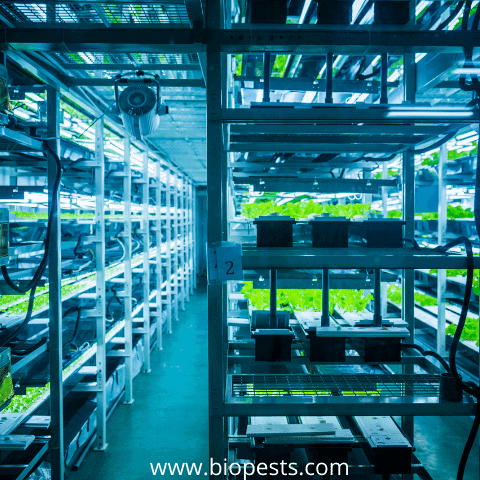Hydroponics is an agricultural system that involves growing plants in mineral-based nutrient-rich water instead of soil. You might think that agriculture without soil will be cost-effective since it will save you many soil-related resources and hassle, but the hydroponic method can be costly. But why is it so expensive?
The 9 reasons why hydroponics is so expensive:
- The initial investment for setting up the facility.
- Purchasing nutrient packages.
- Cost of arranging external sources of water.
- Hiring experts to control and monitor the system.
- Electricity bills.
- Buying equipment for backup power.
- Buying equipment for monitoring.
- Less profit due to damaged crop.
- Maintenance cost of the system.
Let’s take a detailed look into how each reason mentioned above adds to the expenses of operating hydroponics.
1. The Initial Investment for Setting Up the Facility
The initial investment includes building or acquiring an indoor facility with substantial space, as well as the expenses of setting up the hydroponic system. The cost will also depend on the size of the facility and the type of hydroponic system you want to set up.
Some methods include more components and are more expensive to configure.
The expenditure might increase if you decide to build a customized water supply system that suits your facility instead of assembling the pre-designed structures. Most of the time the facility is indoors, therefore you will need to spend considerable money on artificial grow lights to help the plants grow properly.
Without them, plants will die and you will lose your investment.

2. Purchasing Nutrient Packages
The application of nutrient-rich solutions is an essential part of hydroponics, as the roots of the plants fulfill their nutritional requirement by absorbing minerals from the solution.
You can either buy a pre-made package or make a mix yourself by buying different nutrients. The pre-made pack has a balanced composition of all the required nutrients, but they are expensive.
Making your mix will be relatively cheap but is riskier because the solution is the only source for plants to get their nutrients, and they will become deficient if even one nutrient is missing.
Consequently, your whole crop will get destroyed.
Moreover, different plants require different percentages of a particular nutrient. Using the exact solution for all the plants will do them more harm than good. So, you would have to buy different mixes, which adds to the expenditure.
3. Cost of Arranging External Sources of Water
Every process in hydroponic farming requires a regular and considerable supply of water. The nutrient solution needs replacement after every few hours due to the absorption of minerals by the plants’ roots.
If the facility does not have a recycling plant, it will have to arrange clean water for every replacement. Commercial-scale facilities must arrange water through external sources like water tankers to fulfill their demand, making it a recurring cost.
4. Hiring Experts To Control and Monitor the System
Hydroponic systems involve technicalities like monitoring and controlling the following:
- pH
- Aerators
- Lights
- Temperature
- Water pumps
Sometimes, an expert is needed to manage all these variables. Traditional farming does not require particular expertise to carry out the work. However, hydroponics demand significant micro-managing and surveillance to avoid mishaps.
An expert who has experience dealing with such a system will make your life much easier, but he will not come cheap. Furthermore, you may need to hire more than one expert, depending on the size of your facility.
5. Electricity Bills
Electricity, apart from water, is the other crucial component of a hydroponic system and is a recurring cost. You will primarily need the electricity to light up the artificial grow lights.
Moreover, the system will require electricity to power components like fans and water pumps. Your hydroponic system will require more power if you have automatic sub-systems to manage the processes.
All the mentioned requirements will add up to your electricity bill, which will also depend on the size of your farm and your usage in a day.
You can calculate the amount of electricity your system consumes by following the steps given on this website.

6. Buying Equipment for Backup Power
The operation of many processes in the hydroponic system depends on electricity, and without electricity, the whole system will fail, which can cause severe losses. When you include backup power in the operations, it will prevent the complete failure of the system.
Plants growing in the hydroponic system need timely exposure to light and nutritious solutions, and a power outage will disrupt the flow of work. Since indoor plants are more sensitive to deficiencies, a disruption spanning a few hours can inflict irreversible damage to the plants.
You either have to buy a generator or an uninterruptible power supply (UPS) for backup power, and this equipment also costs a fortune.
7. Buying Equipment for Monitoring
The hydroponic system uses the following equipment for the monitoring of different operations:
- pH Sensor to check the acidity of the solution.
- Electrical Conductivity Meter to check the level of nutrients in the water.
- Dissolved Oxygen Meter to check the oxygen levels of the solution.
- Temperature Sensor to make sure the water is at the correct temperature.
- Turbidity Sensor to check if any unwanted object is floating in the water.
This equipment has a one-time cost, but you would have to allocate some money to buy these meters because there are no alternatives.
8. Less Profit Due to Damaged Crop
Plants grown in water are more sensitive than their soil counterpart.
If the plants do not get enough nutrients from the water or if the lighting system stops working for a few hours, the crop will die. Moreover, the harvest is also vulnerable to water-borne diseases like pythium root infection.
If the yield is less than expected, it will only make the whole venture more expensive.
9. Maintenance Cost of the System
The maintenance cost of the hydroponic system is also very high. It includes the additional expenses to keep the light system functioning at total capacity by regularly changing the faulty sources.
It also entails the cost of repairing or replacing any component of the water supply system.
Moreover, the maintenance cost includes the expenditure on keeping the facility clean and hygienic, which is a recurring cost and may vary month by month.
Some of the links above are affiliate links, meaning at no additional cost to you, I will earn a commission if you click through and make a purchase.

